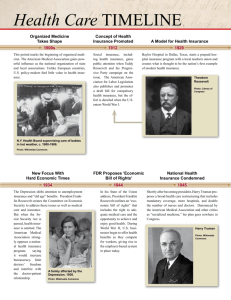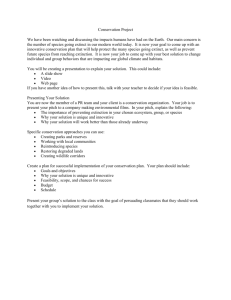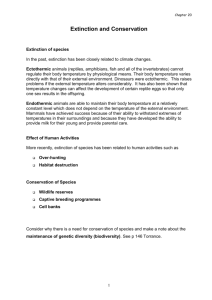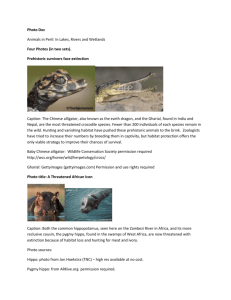pptx
advertisement
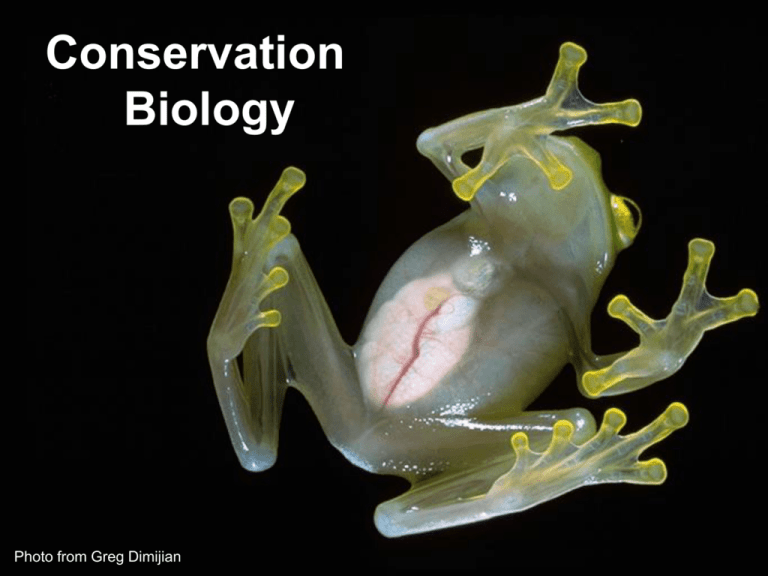
Conservation Biology Photo from Greg Dimijian Instrumental Value Value that Nature has as a means to another’s (i.e., mankind’s) end Anthropocentric viewpoint (i.e., from the perspective of Homo sapiens as “possessor”) Map from pubs.usgs.gov; photo of grizzlies from Wikimedia Commons Intrinsic Value Value that Nature has as an end in itself Biocentric or ecocentric viewpoint (i.e., from the perspective of Nature as “possessor”) E.g., biodiversity is valuable simply because it exists E.g., non-human species have rights Photos from Wikimedia Commons Conservation Biologists / Environmentalists in the U. S. Gifford Pinchot (1865 – 1946) First Chief of the U.S. Forest Service (1905 – 1910) Coined “conservation ethic” Resource Conservation Ethic Utilitarian, anthropocentric “natural resource” philosophy; “the greatest good of the greatest number for the longest time” Photo from Wikimedia Commons Conservation Biologists / Environmentalists in the U. S. Ralph Waldo Emerson (1803 – 1882) Nature (1836) Henry David Thoreau (1817 – 1862) Walden (1854) John Muir (1838 – 1914) Founded Sierra Club (1892) Romantic-Transcendental Conservation Ethic “Nature has uses other than human economic gain;” biophilia Image of Emerson, photos of Thoreau and T. Roosevelt with Muir from Wikimedia Commons Conservation Biologists / Environmentalists in the U. S. Aldo Leopold (1887 – 1948) A Sand County Almanac (1949) Evolutionary-Ecological Land Ethic Arose together with the Modern Synthesis and maturing ecological theory; recognizes the complexity, interconnectedness (including humans) and dynamism of Nature Photo from Oregon State University Conservation Biologists / Environmentalists in the U. S. Rachel Carson (1907 – 1964) Silent Spring (1962) – motivated creation of the U.S. Environmental Protection Agency Photo of Carson from Wikimedia Commons Conservation Biologists / Environmentalists in the U. S. Michael Soulé Co-founder of the Society for Conservation Biology (1985) Conservation Biology is a “crisis discipline” Photo of Soulé from hawaiiconservation.org Extinction in the Geologic Record ? Current mass extinction could result in ~ 50% of species going extinct in 100 years (Wilson 2002) Image from Wikimedia Commons K/T (Cretaceous-Tertiary) Mass Extinction ~ 65 m.y.a.; Ended the reign of the dinosaurs P/Tr (Permian-Triassic) Mass Extinction ~ 251 m.y.a.; ~ 96% of all marine species & ~ 70% of all terrestrial species Historic Extinction – Conservation Biology is a “Crisis Discipline” “Martha” – the last living passenger pigeon – died on Sept. 1, 1914 in captivity in Cincinnati, OH Image of Passenger Pigeon (extinct North American bird, once found in Louisiana) from Wikimedia Commons Threats to Biodiversity Habitat destruction Invasive species Pollution Human Population Overexploitation E. O. Wilson (b. 1929) Photo from Wikimedia Commons; For more information on HIPPO, see: E. O. Wilson (2002) The Future of Life HIPPO Habitat Destruction & Degradation Photos of forest destruction in Brazil & Malaysia HIPPO Habitat Destruction & Degradation “An ever-expanding network of roads, railways, rivers, and shipping lanes means that only 10 percent of the earth’s surface is now remote, defined as being at least 48 hours away from a major city. More than half of the world‘s population lives within an hour of a major city…” Image from Discover Magazine, Jan-Feb 2010 Special Issue, “Top 100 Stories of 2009” – “#92: Nowhere to Hide from the Buzz of Civilization HIPPO Invasive Species Kudzu Snakehead Walking catfish HIPPO Pollution “Photoshopped” image of airplanes from www.surfersvillage.com HIPPO Pollution NASA image from May 24, 2010 posted on Wikimedia Commons HIPPO Human Population “More people means more of all the other HIPPO effects” (Wilson, 2002) 12 11 2100 10 9 Old Stone 7 Age 8 Billions of People New Stone Age Bronze Age Iron Age 6 Modern Age Middle Ages 2000 ? Future 5 4 1975 3 1950 2 1 Black Death —The Plague 1900 1800 1+ million 7000 6000 5000 4000 3000 2000 1000 A.D. A.D. A.D. A.D. A.D. A.D. years B.C. B.C. B.C. B.C. B.C. B.C. B.C. 1 1000 2000 3000 4000 5000 Image from the Population Reference Bureau © 2006 HIPPO Overexploitation Atlantic Cod HIPPO Overexploitation Parrots Monetizing the Instrumental Value of Nature Costanza et al. (1997, Nature) provide this estimate for the value of these ecosystem goods & services: ~ $33,000,000,000,000 / yr […and the gross world product (the sum of all nations’ gross national products) is ~ $18,000,000,000,000 / yr] Ecosystem goods & services illustrated with photos of wetland, pollinator & “decomposer” – Wikimedia Commons
